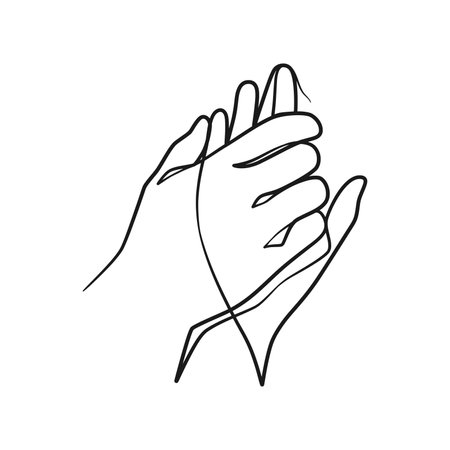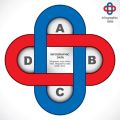1. Introduction to Palmistry in American Culture
Palmistry, often known as chiromancy or hand reading, has intrigued people in the United States for generations. While the roots of palmistry stretch back thousands of years to ancient India and China, its journey into American culture is a fascinating story shaped by waves of immigration, pop culture, and a growing fascination with the mystical.
In the late 19th and early 20th centuries, palmistry made its way into American parlors and traveling fairs. At a time when spiritualism and curiosity about the unknown were on the rise, Americans found themselves captivated by the promise that their hands could reveal secrets about their character and future. Over time, this ancient practice blended seamlessly with modern entertainment and self-exploration trends.
The Historical Evolution of Palmistry in America
| Era | Key Developments |
|---|---|
| Late 1800s | Palmistry introduced at fairs; linked to spiritualism movements |
| Early-Mid 1900s | Palm readings featured in newspapers and Hollywood films; rise of celebrity palmists |
| Late 20th Century | New Age movement revives interest; books and workshops become popular |
| 21st Century | Social media and apps bring palmistry to a new generation; focus on entertainment and self-reflection |
A Blend of Mystique, Curiosity, and Fun
Today, palmistry in America is seen as both an art and a science—an intersection where ancient traditions meet modern curiosity. For some, it remains a tool for self-discovery or spiritual insight. For others, it’s simply a fun party activity or an intriguing conversation starter. Whether you visit a professional palmist or try reading your own hand using an online guide, the practice continues to hold a unique place in American hearts.
2. Scientific Perspectives: Fact vs. Folklore
When it comes to palmistry, or the art of hand reading, Americans are often divided between scientific skepticism and an appreciation for traditional beliefs. Let’s take a closer look at how science views palmistry and how these viewpoints compare with the folk traditions that have made palm reading so popular in modern America.
Scientific Scrutiny: What Does Science Say?
Modern science relies on evidence, repeatability, and clear explanations. From this perspective, palmistry has been met with doubt because its predictions and interpretations cannot be consistently proven or measured. Most scientists consider palmistry a pseudoscience—meaning it does not follow the rigorous methods required by scientific research.
Common Scientific Arguments Against Palmistry
| Scientific Viewpoint | Explanation |
|---|---|
| No Empirical Evidence | There is no concrete data to show that lines on the hand can predict personality or future events. |
| Lack of Consistency | Different palmists may interpret the same hand differently, leading to inconsistent results. |
| Psychological Effects | Some believe palm readings work due to psychological effects like the “Barnum effect,” where vague statements seem personally meaningful. |
Traditional Beliefs: The Cultural Side of Palm Reading
Despite scientific criticisms, palmistry remains deeply rooted in American culture. Many people enjoy palm readings as a form of entertainment or self-reflection. For some, it’s about connecting with cultural heritage or exploring spirituality rather than seeking hard facts.
Why Do People Still Believe in Palmistry?
- Cultural Tradition: Passed down through generations, especially in families with roots in Europe, Asia, or the Americas.
- Personal Insight: Some find value in using palm readings for self-discovery or personal growth.
- Entertainment: Hand readings are often seen at fairs, parties, and events as fun activities.
- Hope and Reassurance: During uncertain times, some turn to palmistry for comfort and guidance.
The Modern American Approach
Today, most Americans approach palmistry with a mix of curiosity and skepticism. While few see it as a precise science, many appreciate it as a meaningful tradition or a way to start conversations about life’s possibilities. In the age of social media and wellness trends, hand reading is sometimes combined with mindfulness practices or used for personal storytelling rather than strict fortune-telling.
Palmistry in Modern America: Science vs. Tradition Comparison Chart
| Science Perspective | Cultural/Traditional Perspective | |
|---|---|---|
| Main Focus | Evidence and repeatability | Cultural meaning and personal insight |
| Typical Attitude | Skeptical; sees as pseudoscience | Open-minded; values tradition and symbolism |
| Main Benefit | N/A (does not recognize benefits) | Self-reflection, entertainment, comfort |
| Role in Society | Largely dismissed by academia and mainstream science | A popular activity at events and online; part of holistic wellness trends |
![]()
3. Core Elements of Hand Reading
The Building Blocks of Palmistry
Modern palmistry in America blends traditional interpretations with today’s psychological insights and self-discovery trends. Let’s explore the main features palm readers focus on: the major lines, mounts, and hand shapes. These elements form the foundation of hand reading and are often used in contemporary settings for personal growth and understanding.
Major Lines and What They Mean Today
| Line | Location | Modern Interpretation |
|---|---|---|
| Heart Line | Runs horizontally at the top of the palm | Reflects emotional style, openness to relationships, and how you express love or empathy |
| Head Line | Runs below the heart line, often starting near the thumb | Reveals thought process, creativity, decision-making, and communication preferences |
| Life Line | Curves around the base of the thumb towards the wrist | Indicates vitality, general well-being, and approach to life’s challenges (not lifespan) |
| Fate Line | Vertical line running up the center of the palm (not everyone has this) | Shows career path, sense of purpose, or significant life changes |
The Mounts: Peaks of Personality
The “mounts” are fleshy pads at the base of each finger and along the palm. In modern American palmistry, these areas are interpreted as representing core personality traits:
| Mount Name | Location | Associated Qualities (Contemporary View) |
|---|---|---|
| Mount of Venus | Base of the thumb | Sociability, passion for life, affection for others |
| Mount of Jupiter | Beneath index finger | Ambition, leadership skills, confidence in social situations |
| Mount of Saturn | Beneath middle finger | Sensitivity to responsibility, practicality, reliability in work or relationships |
| Mount of Apollo (Sun) | Beneath ring finger | Creativity, appreciation for art and beauty, charisma in groups or teams |
| Mount of Mercury | Beneath pinky finger | Communication skills, adaptability, quick thinking in new situations |
| Luna (Moon) Mount | Along outer edge of palm toward wrist | Imagination, intuition, openness to new ideas or spiritual exploration |
The Language of Hand Shapes in Modern America
Palmists also look at overall hand shape. In a contemporary context, these categories can be connected to common personality themes:
| Hand Shape | Description | Tendencies (Today’s Perspective) |
|---|---|---|
| Earth Hands | Square palms & fingers; thick skin | Practicality, dependability; grounded outlook on life |
| Air Hands | Square palms; long fingers | Cleverness, love for learning; great communicators |
| Water Hands | Narrow palms; long fingers | Sensitivity; artistic interests; empathetic nature |
| Fire Hands | Long palms; short fingers | Energized; action-oriented; natural leaders or motivators |
A Modern Approach to Self-Discovery
Palmistry in America today is less about predicting fate and more about providing a mirror for self-awareness. By exploring your hands’ lines, mounts, and shapes through this modern lens, you can gain fresh perspectives on your strengths and patterns—helping you make more informed choices in everyday life.
4. Palmistry in Modern American Life
The Evolving Role of Palmistry
Palmistry, or the practice of reading palms, has found a unique place in modern American life. While its roots go back centuries, today it serves a variety of purposes that extend beyond simple fortune-telling. In the United States, palmistry is often seen as both an art and a tool for self-reflection, personal growth, and entertainment.
Palmistry as a Tool for Self-Reflection and Guidance
Many Americans turn to palmistry when seeking insights into their personalities or life paths. Instead of predicting specific events, palm readers often help individuals understand their strengths, challenges, and potential. This modern approach focuses on using hand lines and shapes as mirrors to ones character and inner world.
| Purpose | How Palmistry Is Used |
|---|---|
| Self-Reflection | Discovering personality traits, emotional tendencies, and personal strengths. |
| Personal Guidance | Gaining insight into relationships, career choices, and life challenges. |
| Entertainment | Enjoying palm readings at parties, fairs, or festivals as a fun activity. |
| Wellness & Mindfulness | Incorporating hand analysis into wellness routines for holistic self-care. |
Palmistry in American Pop Culture
Palmistry has made frequent appearances in movies, television shows, and social media. From classic films featuring mysterious fortune tellers to modern influencers sharing hand-reading tips on TikTok or Instagram, palmistry continues to captivate American audiences. Its mystique often adds intrigue to stories or serves as an icebreaker at social gatherings.
The Wellness Trend: Palmistry for Mindful Living
In recent years, wellness culture in America has embraced alternative methods for self-discovery and stress relief. Palmistry fits right in with practices like astrology and tarot cards. Some people include palm reading in their mindfulness routines or use it as a creative way to check in with themselves emotionally and mentally.
Palmistry Services Today
You can find palmists at street fairs, metaphysical shops, online platforms, or even offering remote readings via video calls. Many Americans enjoy exploring their hand lines not just for predictions but as a way to start meaningful conversations about lifes journey.
5. Ethics and Responsibility in Practice
The Importance of Ethics in Palmistry
Palmistry in modern America is more than just reading lines on a hand; it’s about building trust and offering guidance with honesty and integrity. Whether you are a professional palm reader or an enthusiastic amateur, following ethical guidelines is crucial to ensure a positive experience for both you and your clients.
Key Ethical Principles for Palm Readers
| Principle | Description |
|---|---|
| Respect | Treat every client with dignity, regardless of their background or beliefs. |
| Privacy | Keep all readings confidential and never share personal information without permission. |
| Cultural Sensitivity | Be aware of diverse cultural attitudes toward palmistry, and avoid making assumptions or judgments. |
| Honesty | Be clear about what palmistry can and cannot do—never promise specific outcomes or guarantee results. |
| Empowerment | Encourage clients to make their own decisions rather than becoming dependent on readings. |
Best Practices for Responsible Readings
- Obtain Informed Consent: Before beginning a reading, explain your approach and make sure the client feels comfortable moving forward.
- Avoid Sensitive Diagnoses: Never attempt to diagnose medical or psychological conditions during a palm reading. Instead, encourage clients to seek help from licensed professionals if needed.
- Maintain Professional Boundaries: Set clear limits to maintain a professional relationship, especially when discussing deeply personal matters.
- Use Inclusive Language: Speak in ways that welcome people from all walks of life. Avoid stereotypes or language that could offend.
- Ongoing Education: Continue learning about ethical issues in palmistry and stay updated on best practices within the American context.
Respecting Client Privacy and Data Protection
Palm readers often learn personal details during sessions. In the United States, respecting privacy is not just polite—it’s expected. Store any notes securely, ask before sharing testimonials, and destroy records if requested by the client. Remember, trust is built on confidentiality.
Cultural Awareness in the American Setting
The U.S. is home to people from many backgrounds. Some may see palmistry as spiritual, while others view it as entertainment. Always check in with your clients about their expectations, and be sensitive to different beliefs and values. If someone expresses discomfort, respect their boundaries immediately.


